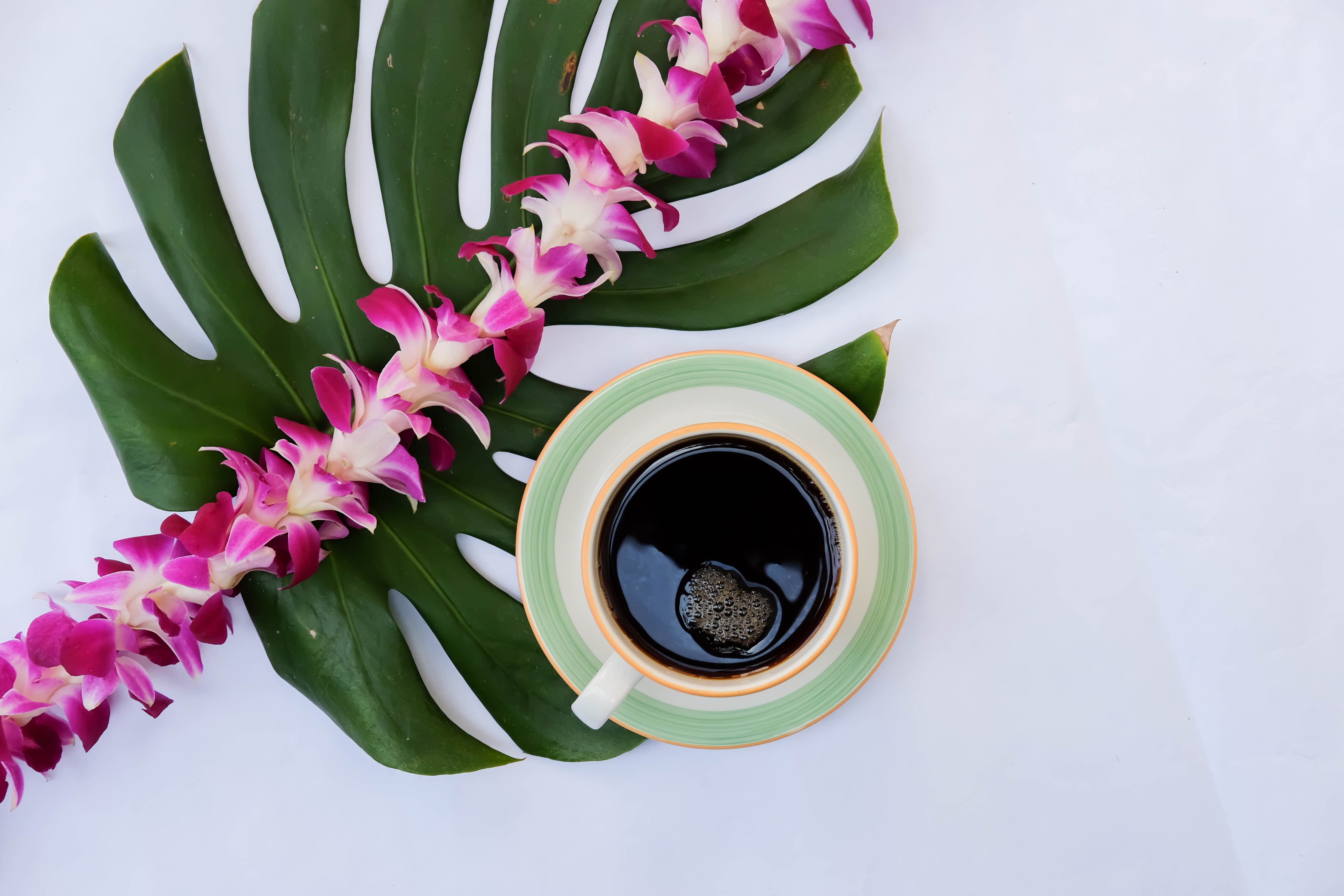
So what is Kona Coffee?
From New York to San Francisco to Tokyo and beyond, everyone’s heard of Kona coffee. Kona coffee is prized worldwide for its mild and subtle, yet surprisingly complex flavors, and is strictly defined and graded by state standards. Despite Kona coffee’s popularity and high demand, it may surprise you to learn that this coffee, or any coffee, isn't originally native to Hawai‘i!
So what makes Kona coffee Kona, and how did it get so famous?
Where did Kona Coffee Come From?
Coffee was first introduced to Hawai‘i by way of Brazil in the 1820's. The first known plantings were actually in Manoa Valley on Oahu, though those original plants did not take very well. But by 1828, coffee had landed on the Big Island and was first planted in the Hilo area. Later that year, Reverend Samuel Ruggles took some of those seedlings and planted the first ever coffee trees in the Kona region on the westward volcanic slopes of the Big Island. It was the coffee grown here in Kona that began to attract positive attention, and thus Kona coffee was born.
The Path to Renown
Though coffee was continuously cultivated on the island since 1828, it took decades for it to reach international fame. For one, Hawaiian coffee was never the number one commercial crop: historically, sugar and pineapple were the dominant Hawaiian agricultural products. But at the 1873 World’s Fair in Vienna, Austria, Kona coffee received its first international accolades, hinting at the coffee’s future specialty recognition.
"Though coffee was continuously cultivated on the island since 1828, it took decades for it to reach international fame."
Kona coffee — and Hawaiian coffee in general — went through several periods of growth and contraction in conjunction with major events like the Klondike Gold Rush, the annexation of Hawai‘i by the US, and the two World Wars of the 20th century. During these years, most of the Kona region was farmed in small family holdings by migrant workers when they weren’t contracted to work on the much larger, more lucrative sugar and pineapple plantations. But through it all, the Kona coffee varieties continued to quietly develop and improve.
Finally, beginning in the 1980s, Kona coffee began to experience its long-awaited resurgence, along with the rest of specialty coffee all around the globe. As sugar and other cash crops declined, and the coffee enthusiasts of the world turned to better tasting and more ethically sourced coffees, Kona was able to reclaim its earlier fame. Now, it is one of the most sought-after origins!

What Makes Kona, Kona
Variety
In 1892, Guatemalan coffee seeds were brought to Hawai‘i to help bolster the original Brazilian stock. The new varietal, Typica, was one of the old heirloom varieties originally brought to the Americas when coffee began to be cultivated around the world. Coffee tends to mutate and adapt to its climate wherever it is planted and this Guatemalan Typica came to be widely grown in Kona and is now considered its own variety, called Kona Typica.
"Guatemalan Typica came to be widely grown in Kona and is now considered its own variety, called Kona Typica."
Today, many Hawaiian farms are exclusively planted with Kona Typica, to which many attribute Kona coffee’s nuanced flavors. Our own farm is planted with about 90% Kona Typica, with the remainder being Caturra and some yellow Typicas. We continue to diversify our farm’s varieties, but Kona Typica will always be important.

Geography
Hawaiian geography and climate also play a significant role in the quality of Kona Coffee. Altitude is vital for quality coffee since the best coffees tend to grow in slightly cooler conditions. Compared to global coffee production, coffees in Hawai‘i are grown at a lower relative elevation. But because Hawai‘i is so much farther north of the equator than many other coffee regions, smaller changes in elevation have a larger impact on the coffee’s quality by allowing access to cooler air and the necessary blend of sunlight and moisture. The climate in Hawai‘i’s Kona region, and the mineral-rich volcanic soils of Mauna Loa’s steep slopes, ensure exceptional conditions for growing some of the world's best coffee."...because Hawai‘i is so much farther north of the equator than many other coffee regions, smaller changes in elevation have a larger impact on the coffee’s quality"
Protection
Unfortunately, unscrupulous traders have been known to pass off other coffees as Kona coffee. The State of Hawai‘i issued legislation in 2003 to regulate this abuse of the Kona coffee name, and has more recently been considering even stricter standards on the use of Kona coffee in mixed-origin blends. Kona coffee is only grown on about 6 square miles, making it a hard-to-find high end product--the perfect target, unfortunately, for food fraud. Tough standards and transparency are some of the tools we use to combat this.
We take great pride in continuing the tradition of growing this unique coffee on our farm in the Kona region.
-
Related Content:
- Our Farm to Cup | A Visual Tour
- Kona Coffee | Making Sense of the Grades + Buying Guide | Honolulu Coffee Blog



